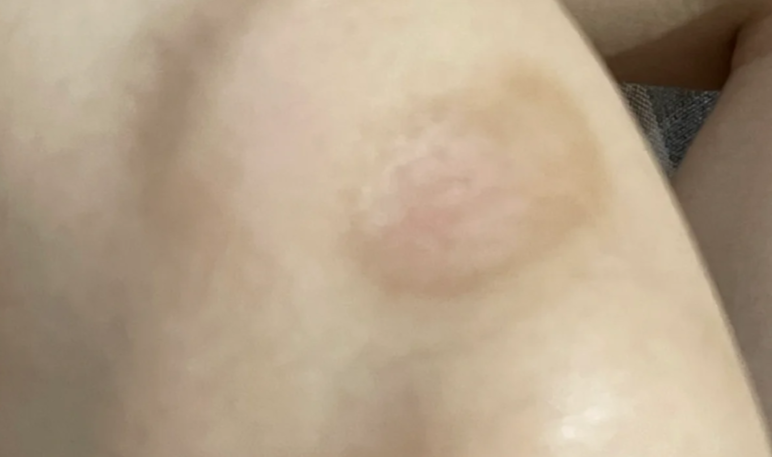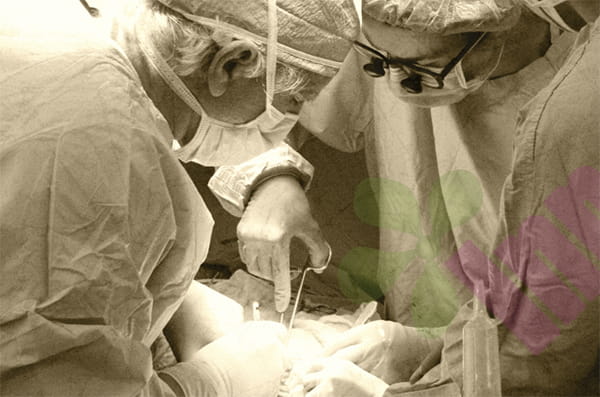After a wound heals, the skin may darken, leaving behind brown, dark brown, or even gray-black marks. This is especially noticeable if the skin is already darker or if the wound is severely inflamed. This condition is known as post-inflammatory hyperpigmentation (PIH). While it's painless and itchy, it can be disfiguring and disturbing, especially on the face or exposed areas. Don't worry; this is a natural reaction to injury and inflammation. In most cases, with proper treatment, the discoloration will fade over time, though the process can be lengthy and requires patience.

Why did the wound become darker in color after it healed?
The core cause lies in the stimulation of the skin's melanocytes. When a wound becomes inflamed, infected, or itchy, inflammatory factors activate melanocytes in the basal layer of the skin. These cells, like factories, begin to work overtime to produce melanin granules. This melanin is "swallowed" by the surrounding keratinocytes and transported upward during skin renewal. Under normal circumstances, it is gradually metabolized. However, under inflammatory conditions, either overproduction occurs, metabolism slows, or both. The result is a large accumulation of melanin in the epidermis and even the dermis, making that area of skin appear darker than the surrounding area. People with darker skin, such as Asians and African-Americans, are more prone to this problem than Caucasians because their melanocytes are more active. The more severe the inflammation of the wound, the longer it persists, the more it cracks and doesn't heal, or if you frequently pick at or scratch the wound during the healing process, the darker and more persistent the discoloration will be. Furthermore, the newly healed skin is particularly delicate. If you don't pay attention to sun protection, ultraviolet rays will strongly stimulate melanocytes, further exacerbating the discoloration.
How to prevent pigmentation?
To prevent or reduce this annoying pigmentation, the key lies in early wound care and meticulous post-healing care. Most importantly, absolutely, is strict sun protection! As soon as the wound heals and the scab falls off, revealing the pink new skin, sun protection should be applied immediately. Whether sunny or cloudy, whenever you're outdoors, use a broad-spectrum sunscreen with SPF 30 or higher and a PA+++ rating. Apply a generous amount—about the size of a dime—to your face and neck, reapplying every two to three hours. Sunscreen alone isn't enough; it's best to apply additional sun protection: wear a wide-brimmed hat, a parasol, and protective clothing. Avoid direct sun exposure, especially between 10 a.m. and 4 p.m., when UV rays are strongest. This sun protection regimen shouldn't be practiced for just one or two weeks; it should be maintained for at least three to six months, or even longer, until the pigmentation is noticeably reduced to your satisfaction. Furthermore, actively controlling inflammation and infection is crucial during the wound healing process. Change the dressing according to your doctor's instructions and keep the wound clean. If your doctor prescribes an antibiotic ointment or notices signs of infection, treat it promptly. Keep inflammation to a minimum and for the shortest possible time to minimize subsequent factors that stimulate melanin. Keep your hands off the scabs and never pick at them! It's normal for scabs to itch, so no matter how itchy you are, be patient and let them fall off naturally. Forcibly picking at them can not only cause scarring and dents, but also promote pigmentation. For those with prone to pigmentation or wounds in exposed areas, you can use a mild pigment-inhibiting ointment, such as a low-concentration azelaic acid (15%-20%) or a mild vitamin C derivative serum, after the scabs have completely fallen off, about 1-2 weeks after the stitches are removed. Ask your doctor for specific instructions. Under your doctor's guidance, use a mild anti-pigmentation ointment, such as a low-concentration azelaic acid (15%-20%) or a mild vitamin C derivative serum, to help prevent excessive pigmentation.
How to improve pigmentation?
If pigmentation has already formed, don't despair; there are ways to reduce it. The most fundamental and essential principle remains strict sun protection, which is the prerequisite for all subsequent treatments to be effective. Building on this foundation, you can try various methods to reduce pigmentation. Topical medications are a common and relatively gentle option, but they require consistent use for several months to see results. Your doctor may recommend a cream or serum containing niacinamide, vitamin C, or its derivatives. These ingredients work differently: some inhibit melanin production, while others accelerate melanin metabolism and exfoliation. Be careful when using these medications; some, such as tretinoin, can be irritating. It's best to start with a low concentration and a small area under a doctor's supervision, using it at night and maintaining increased sun protection during the day. For more stubborn or larger areas of pigmentation, cosmetic treatments often offer more dramatic and rapid results. Chemical peels, such as niacin and salicylic acid, promote skin renewal by controlled exfoliation of the epidermis, which contains excess melanin. Multiple treatments are generally required. Intense pulsed light (IPL) or Q-switched laser treatments can selectively break down melanin particles, which are then metabolized by the body. These treatments require specialized medical expertise, with appropriate parameters and duration tailored to the severity of the pigmentation and skin type. Microneedling or radiofrequency microneedling can also help improve pigmentation by stimulating skin renewal and collagen remodeling. Sun protection is essential before and after these treatments, and they should be performed by experienced practitioners in reputable hospitals or clinics to avoid worsening pigmentation through improper procedures. Patience is essential with any treatment. Skin metabolism has its own cycle (approximately 28 days), and pigmentation reduction can take months or even years; it's not something that can be achieved overnight. Avoid frequent product or treatment changes; stick to an effective regimen for at least 3-6 months before evaluating results. Managing expectations is also crucial. A complete restoration of the skin to resemble healthy surrounding skin can sometimes be challenging; the goal is a noticeable reduction to the point where it's unnoticeable from social distancing.
Finally, a reminder: while post-inflammatory hyperpigmentation is common, if you notice uneven coloration, blurred boundaries, or changes in skin texture with hardening, depressions, or swelling, or even itching and ulceration, don't just treat it as normal hyperpigmentation; see a dermatologist immediately. For more information on Innomed® Silicone Scar Dressing, refer to the Previous Articles. If you have customized needs, you are welcome to contact us; you can do so wholeheartedly. At longterm medical, we transform this data by innovating and developing products that make life easier for those who need loving care.
Editor: kiki Jia

 English
English عربى
عربى Español
Español русский
русский 中文简体
中文简体








